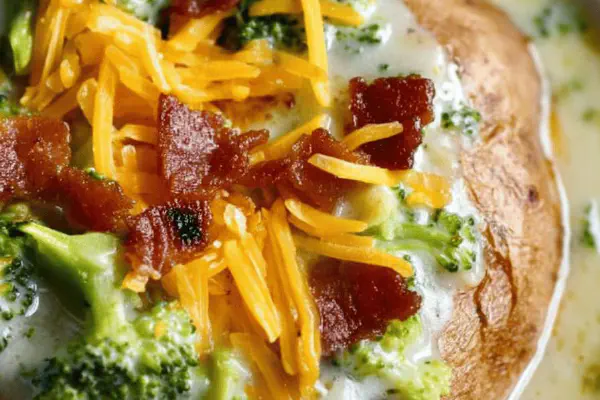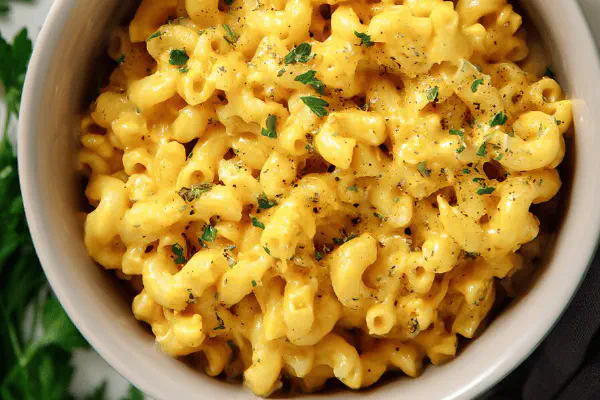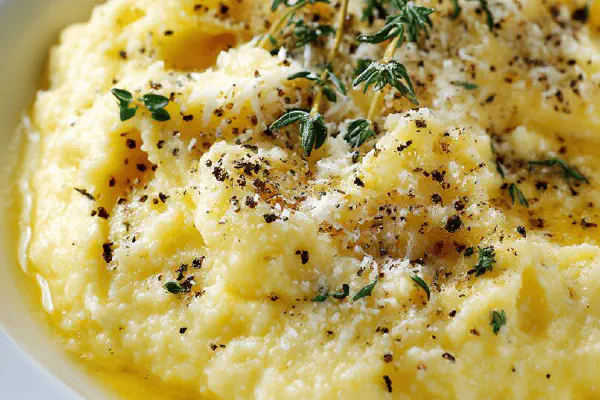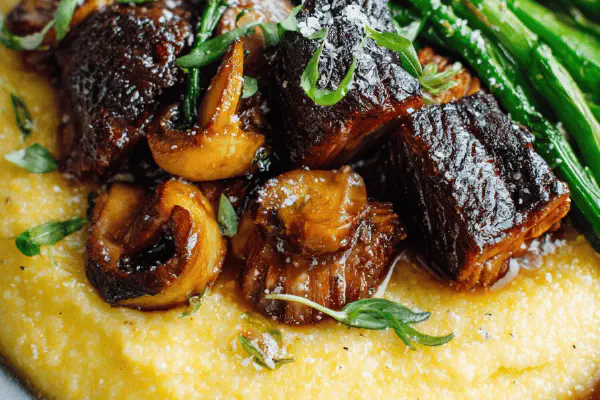Hot Chicken Sandwich
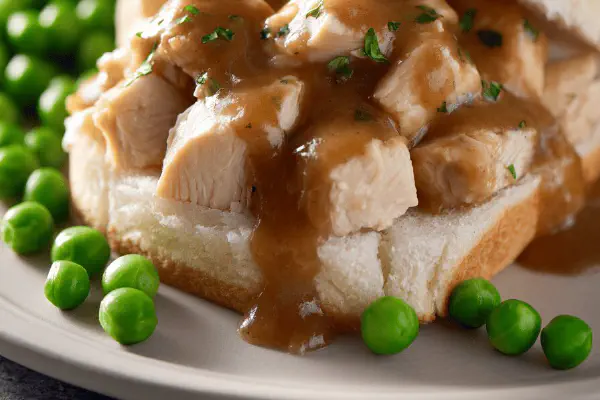
By Emma
Certified Culinary Professional
Ingredients
- 180 ml 3/4 cup chicken broth or water
- 80 g frozen peas approximately 1/2 cup
- 340 g diced cooked chicken warm about 2 cups
- 1 batch hot brown sauce hot
- 8 split oval or round sandwich buns or 8 slices white bread
About the ingredients
Method
- Heat broth in small pot until bubbling gently. Toss frozen peas in, reduce heat so broth barely bubbles; simmer peas about 3 to 4 minutes or until tender but still bright green. Drain immediately to avoid mushiness.
- Place warm diced chicken evenly across bottom halves of buns or bread slices. Spoon generous amounts of hot brown sauce over chicken. Cap with top halves, then spoon more sauce over the bun tops. Spread peas evenly on top.
- Serve immediately while buns soak up sauce but still hold shape. The warmth melds flavors; sauce thickens slightly as it cools but stays rich.
Cooking tips
Chef's notes
- 💡 Broth heat cues are crucial—gentle bubbling never a rolling boil. Peas go in frozen, keep watch. Bright green signals done. Drain quick to stop mush. Residual heat keeps cooking Senses tell you when to pull, eyes on color, ears on bubbling sound. This controls texture - no dull peas, not mushy blobs.
- 💡 Chicken needs warming not cooking. Cold chunks kill sandwich heat profile. Warm diced chicken to keep sandwich hot inside out. Avoid drying out by reheating gently - microwave with splash broth or quick pan toss. Coated with thick brown sauce that clings; sauce temp matters, hot but not scorch. Timing and layering dictate final bite texture. These little moves separate chew from soggy or bland.
- 💡 Sauce consistency makes or breaks. Use drippings or store bought gravy. Needs to be thick enough to stick yet still pourable. Too thin and buns sog out fast. Too thick gets gluey and heavy. Adjust with broth or quick simmer. Salt adjust depending on gravy choice. Sauces cool and thicken—serve immediately. Juggling heat and consistency requires sensory checks constantly.
- 💡 Bread choice impacts soak and texture. Dense buns or soft sandwich bread both viable. Toasting can help but risks losing soak balance; soggy bread kills bite contrast. Use split oval buns or even sliced bread, just keep warm to prevent cold glue effect. Buns that soak without fall apart need balance. Test by pressing lightly before assembly to feel fluff versus sog.
- 💡 Peas can swap for corn or mushrooms. Each changes texture and flavor punch. Corn sweeter, mushrooms earthier. Both need quick cooking, watch heat closely. Peas lightly simmered keeps color and bite. Residual heat cooking is your friend. Keep elements warm before assembly or sandwich loses cohesion. Messiness expected but that’s flavor mingling showing. Prep priorities include warmth and good timing.
Common questions
Can frozen peas be used instead of fresh?
Frozen preferred. More uniform cook, quick simmer keeps brightness. Fresh peas vary size, need watching or risk mush. Frozen locks texture better. Timing critical. Drain quick after simmer. Residual heat carries cooking once off stove. Peas should pop slightly, not flop.
What if I don't have chicken broth?
Water fallback only. Less depth. Add pinch salt or herbs to boost. Broth from roasting best but not always on hand. Plain water dilutes flavor, so compensation with seasoning needed. Avoid water if possible but adjust sauce salt or herbs if stuck. Quick herb sprigs work in simmering broth.
How to prevent soggy buns?
Speed and soak balance. Assemble on warm bread. Sauce thick but pourable so buns soak without collapse. Toasting can stiffen surface but risks losing soak comfort. Use denser bread or buns for resilience. Drain peas well, don’t flood with sauce. Serve immediately before bread weakens. Timely serving is key.
Can leftovers be saved?
Cool then fridge best. Reheat gentle—microwave with splash broth or pan to avoid dry chicken. Sauce thickens cold; rewarm and stir to loosen. Buns get soggy fast, so consider deconstruct or re-toast lightly. Eat within 2 days. Can freeze but texture shifts; peas mush or lose brightness after thaw.
